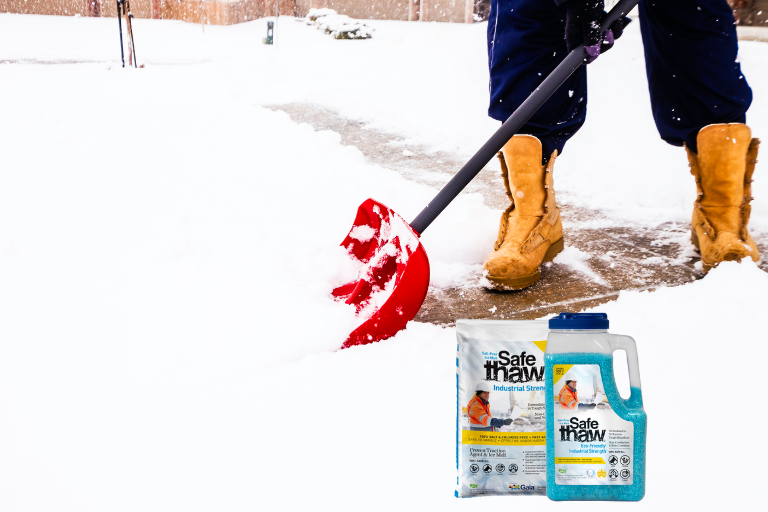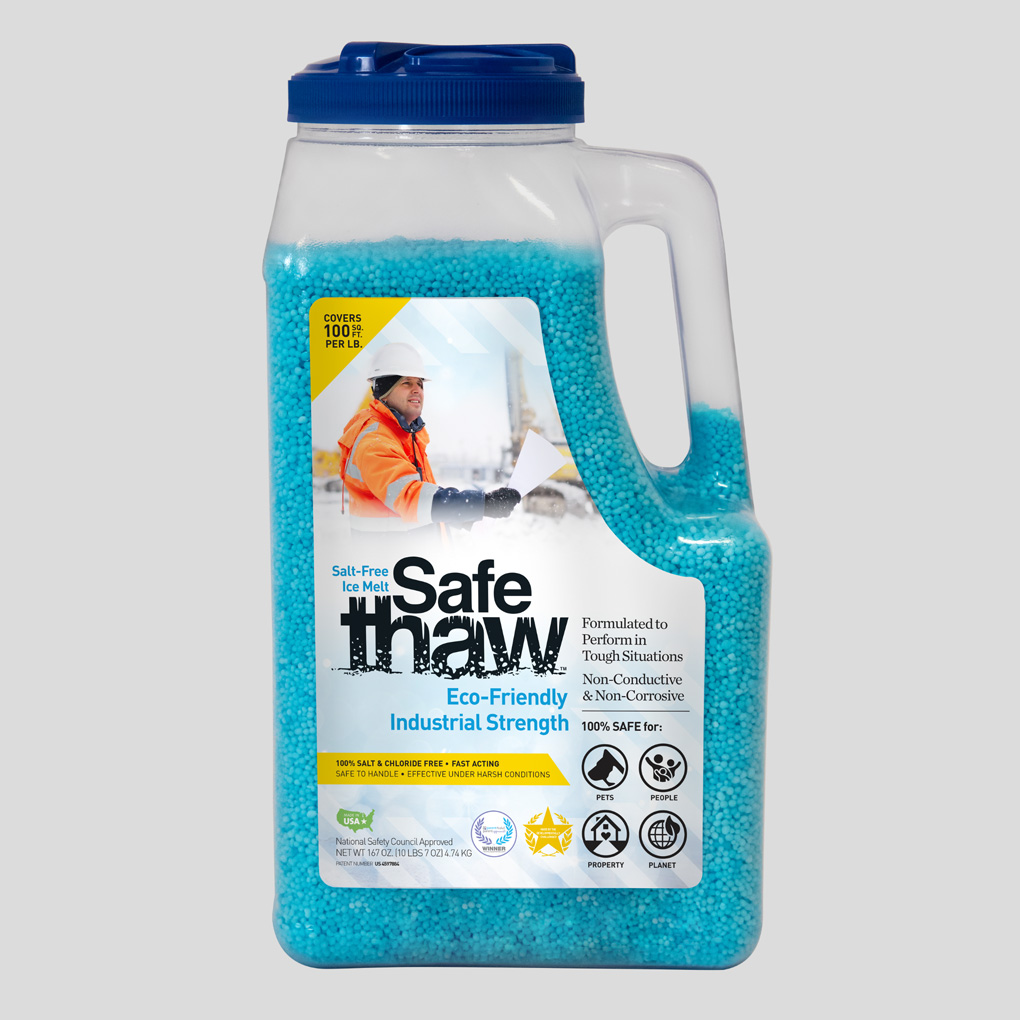Salt Story: The Effects Of Salt On Concrete

As winter’s grip takes hold, icy driveways and walkways can become a significant concern for homeowners. While many turn to salt as their go-to solution to combat ice, few stop to consider the consequences of “salt on concrete.” This age-old remedy, while effective, comes with its own set of challenges. Let’s dive deep into the world of salt, its effect on concrete surfaces, and discover better alternatives for ice-melting.

Frozen Driveways? Melt the Ice Away with Safe Thaw!
Safe Thaw was created as the ice management solution for tough winter environments. Ideal in commercial and industrial properties, shops, government agencies, bridges, and construction.
The Power And Popularity Of Salt: Salt On Concrete
Salt, in its various forms, has been humanity’s companion for ages. When it comes to icy roads and sidewalks, salt does wonders. It lowers the freezing point of water, turning ice back into its liquid state even in cold conditions. This property is why many municipalities and homeowners sprinkle salt generously during wintry months.
But What Happens To Concrete?
Concrete, though robust and durable, is porous. This means that when water – or in this case, melted ice – gets into those pores and then re-freezes, it expands. The repeated cycle of freezing and thawing, known as the freeze-thaw cycle, can cause the concrete to crack, flake, and scale.
Now, introduce salt into the mix. When salt is used to melt the ice, the resulting saline solution is even more damaging. It accelerates the deterioration of the concrete, making it more susceptible to cracks and potholes. Over time, a once-pristine driveway or sidewalk can look worn out and require expensive repairs.
Winter Storms Are Here!
Stay Safe with Our 100% Salt And Chloride-Free, Pet Safe Ice Melt.
Salt’s Hidden Challenges
Beyond the obvious physical damage, there are some more subtle issues at play:
- Corrosion: Salt can expedite the corrosion of metal reinforcements within the concrete. As these reinforcements corrode, they expand, adding to the internal pressures on the concrete, leading to more cracks.
- Efflorescence: Ever spotted those white, powdery substances on concrete surfaces? That’s efflorescence – a direct result of salt bringing the soluble salts within the concrete to the surface.
Seeking Safer Solutions: How To Melt Ice Fast Without Damaging Concrete
We’ve established that while salt can be effective in melting ice, its repercussions on concrete are less than desirable. So, how do you strike a balance between safety and preserving the integrity of your concrete surfaces?
Enter Safe Thaw, a product that promises the efficacy of melting ice without the damaging effects of salt. Being a chemical and toxin-free, industrial-use ice melt, Safe Thaw provides the following benefits:
- Efficiency: While many alternatives require higher quantities to achieve the same melting power as salt, Safe Thaw stands out. It melts ice quickly, living up to the need of “how to melt ice fast.”
- Safety: No harmful chemicals mean it’s safer for pets, plants, and of course, your concrete.
- Durability: By reducing the freeze-thaw cycles, Safe Thaw ensures that your concrete remains in its best condition for longer.
100% Salt & Chloride-Free Ice Melt for Winter Storm Protection.
In Conclusion
The story of salt and concrete is a tale of good intentions with unintended consequences. While it’s natural to seek immediate solutions to icy problems, it’s equally important to consider the long-term effects. By switching to alternatives like Safe Thaw, homeowners can enjoy ice-free driveways and walkways without the looming threat of concrete damage.
Stay informed, choose wisely, and let’s make our homes safer and more sustainable spaces for years to come.
Try Also Our Other Winter Safety Products:
Safe Paw
The Original and #1 Selling Pet and Child Safe Ice Melt for over 20 years. Guaranteed environmentally safe –It won’t harm animals or children, and it won’t damage your property. That’s Safe Paw. Safe Paw can change how winter affects our planet.

Walk On Ice
The handy disposable canister can be taken everywhere, with the same 100% naturally occurring minerals that provide instant traction on ice or snow. Use it on sidewalks, steps, or as an instant traction agent for your car.



